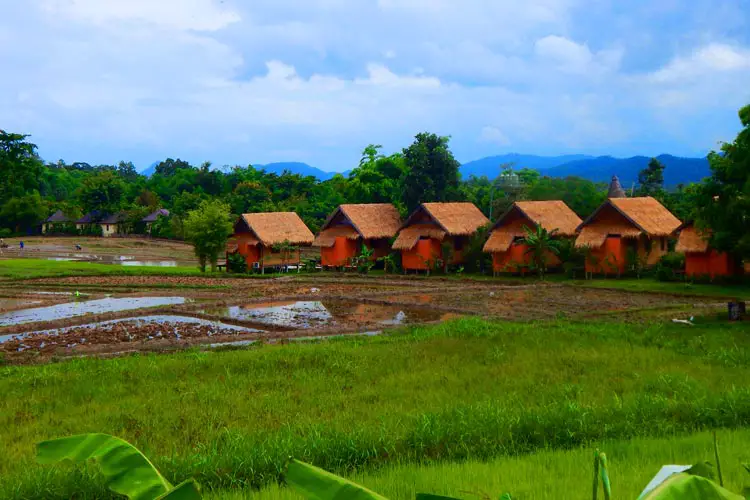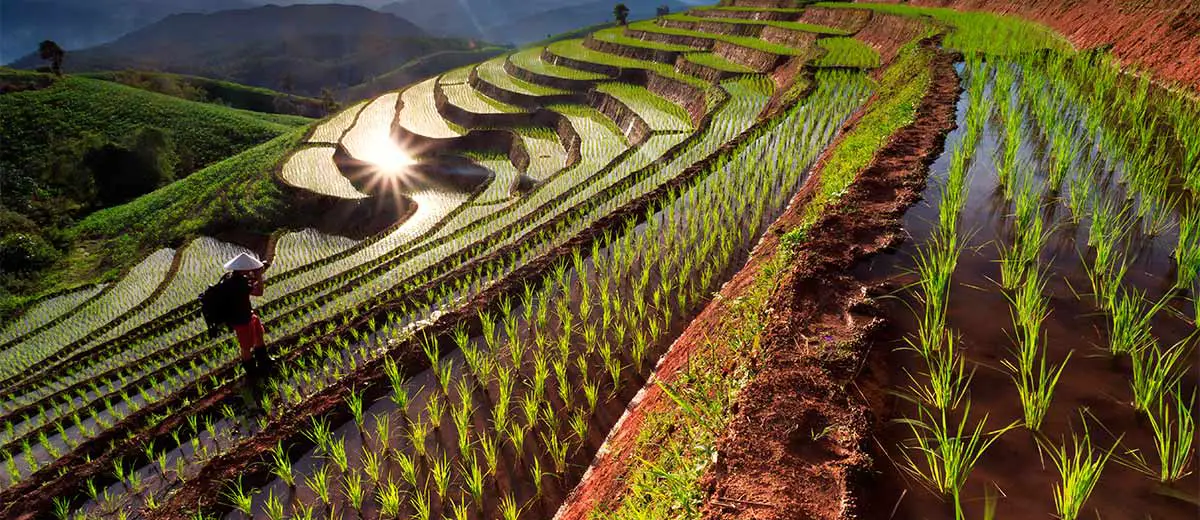Working with the Land – Northern Thailand
For the most part, people expect a trip centred on ecotourism to involve as much time spent in nature as possible. After all, doesn’t the very word ecotourist seem to imply time spent away in the woods, far from the reach of civilization?
I certainly don’t want to downplay that aspect of ecotourism, and in fact, it was even brushed upon in last week’s post. However, I firmly believe that being an ecotourist doesn’t have to mean spending all your days trekking through nature and all your nights in a tent. Instead, it comes from seeking a genuine connection with the land. For this reason, I find that oftentimes locals are the best source of ecotourism inspiration, especially farmers and others who work directly with the land. Besides having a better knowledge of the nuances of the area, these people are often ingrained with a deep respect and love for their natural surroundings, which is something every ecotourist should seek to emulate.
During our time in northern Thailand, particularly in Pai and Chiang Mai, we had the opportunity to see countless folk of this variety in their natural habitats. Like much of Asia, the most important Thai crop is rice. What many Westerners don’t know about rice cultivation, however, is how different the process for growing rice is compared to other crops such as corn or wheat.
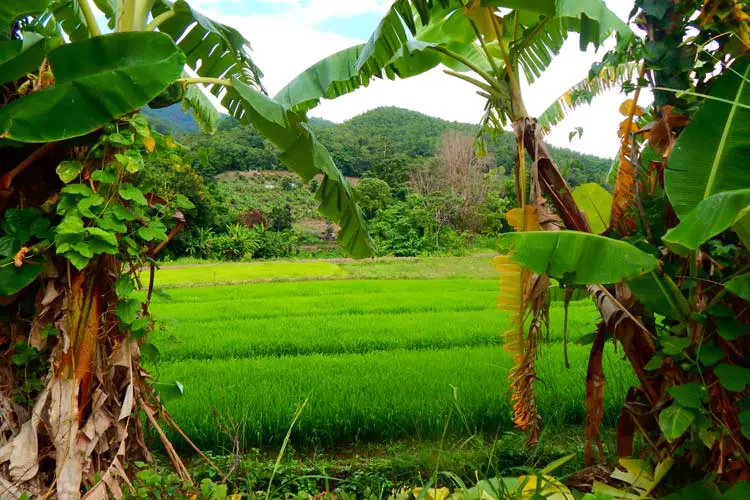
The primary problem is that rice ought to be submerged in at least two inches of water (but often closer to 6 inches) for the majority of its growth cycle. While some modern farmers have found ways to sustain rice in extremely damp soils, it seems that all the Thais we saw used the traditional method of flooding a field.
Of course, the process of submerging a field of rice isn’t quite as simple as leaving a hose turned on in the field. Water has this annoying habit of flowing downhill, which forces the Thai farmers to intricately learn each and every bump of their fields. What’s more, it often requires them to create terraces to help level out particularly unruly hills and maximize growing space. Many historians speculate that the development of the terracing system some 2000 years ago played a major role in allowing Asian populations to expand into previously uninhabitable land. Even today, these terraces play a major role in helping farmers to meet the demand, especially in hilly regions such as northern Thailand. What’s more, they give the landscape a surreal, albeit unnatural, quality.
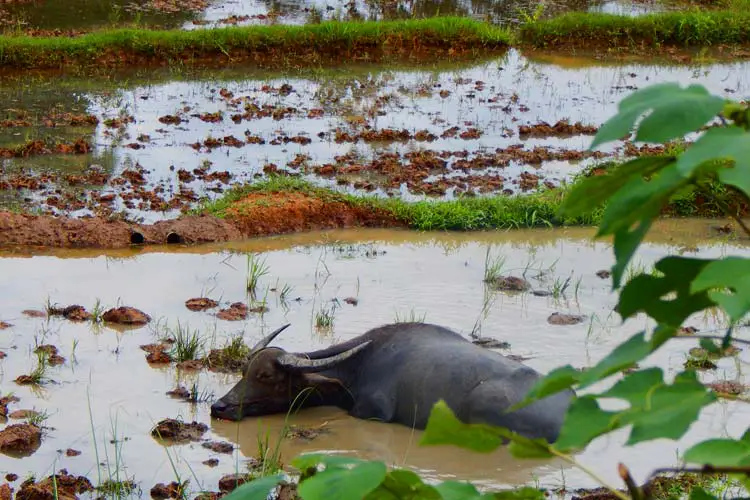
Another example of how rice harvesting requires a deep connection to the land comes during harvest. Though the rice prefers to be submerged in water during the growth process, smart farmers know the field must be drained before harvesting the heads. This is thought to help increase crop yield. However, it also serves a secondary function in helping cut methane emissions. Rice cultivation is a major source of atmospheric methane, a greenhouse gas which is estimated to be twenty times as capable of trapping heat as carbon dioxide. When the fields are drained, the methane release cycle is interrupted. This prevents the field’s methane from entering the atmosphere and also helps to keep the soil in prime condition for next years crop.
Unfortunately, the Thai farming industry is facing many of the same problems plaguing farming industries around the world. Younger generations are far more likely to move to the city and pursue a job in industry or business than they are to stay on the family farm. Consequently, the average independent farmer is getting older and becoming more likely to retire, or at least farm a smaller plot. Meanwhile, the global population is increasingly exponential, which brings along a huge increase in the demand for food products. The only way these demands can be met is through agribusiness companies like Monsanto or Cargill. These enormous commercial enterprises are capable of farming thousands and thousands of acres per day, far outpacing what a typical independent farmer can manage. These companies are also regularly accused of using unsustainable practices on their farms.
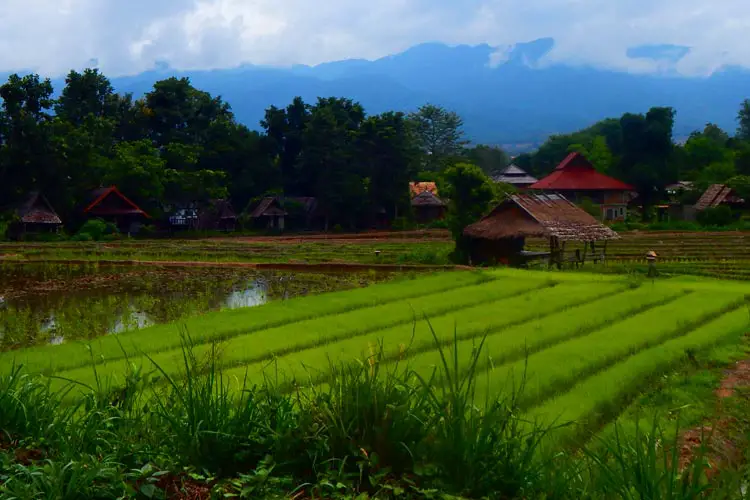
It’s a complex situation, to be sure. On the one hand, no one wants to argue against having enough food for everyone. On the other hand, is the food we eat being produced in an ethical manner? Are we forcing small farmers out of business?
This certainly seems to be the case in northern Thailand, where farmers are having to become creative in finding ways to make enough of a profit to last another year. Some farmers offer tours of their farm, showing visitors traditional farming practices and letting them taste food right out of the ground. Still, others have begun looking at growing other crops besides rice, or implementing machinery to help maximize crop yields. In some regions, such as the area around Pai, nearly all the farmers have built a dozen or so bungalows on their farm, which they charge tourists to stay in like a hotel. It’s interesting to think about how this proves a more profitable venture for the farmer than using that acre to grow more crops. Life has never been particularly easy for these farmers, and recently it only seems to have gotten harder. Still, they’ve managed to hold on this long, and visitors to northern Thailand can expect to see the stunning rice paddy farms for quite some time.
